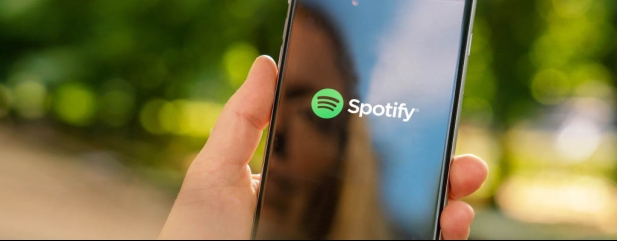Archived article
Please note that tax, investment, pension and ISA rules can change and the information and any views contained in this article may now be inaccurate.
Spotify stock asks too much of investors

It may seem odd that it was right in the teeth of a global pandemic that shares in music streaming service Spotify Technology sprang to life. Since the 3 April 2020, the stock has rallied nearly 130% to nearly $280. It currently changes hands at $254.43.
This sudden jolt of investor support came after a prolonged spell of doing precious little. Since sparking huge excitement by joining the New York Stock Market in April 2018 through a direct listing at $132, the stock had spent most of its time since at about $20 either side of this starting price.
Investors have clearly been seriously conflicted about how to value a business, that appears to have huge growth potential but has yet to make an annual profit.
SPOTIFY 101
Before we get into why this is, and importantly, why it seems to have changed, let’s get back to basics. Spotify is an on-demand music streaming service that allows users to browse a vast catalogue of music, licensed through multiple record labels, then create and share playlists with other users.
In much the same way that Netflix has emerged to dominate streaming TV and films, Spotify has become top dog with music. Founded in 2006 in Sweden as a solution to a massive internet piracy problem, it now operates in close to 80 markets worldwide and is estimated to command about 36% of global music streaming market share.
As of 30 June it had roughly 299 million monthly active users (MAUs) of whom 138 million are paying premium subscribers, bolstered by the boost in demand this year as Covid-19 lockdown came into force. The rest use the service on a ‘freemium’ basis, paying no subscription but having to put up with advert interruptions every few tracks.
For comparison, Apple Music last reported 60 million paid subscribers in the middle of 2019, although it has suspiciously stayed mum on breaking out figures since. Amazon Music has approximately 55 million music subscribers, so Spotify is well ahead in the streaming music wars.
But Apple and Amazon can bundle music in with other services, something Spotify cannot. For example, Amazon Music is part of its Prime package, including its streaming TV service and one-day delivery of millions of items. That’s compelling in a way Spotify is not.
Users have access to more than 35 million songs through its handy app, available on all smartphones, tablets, PCs, some smart TVs and other devices.
The model is not complex. Spotify pays licence fees to recording labels, artists, publishers, and other rights holders for streaming their music on its platform. It also uses clever algorithms to work out what tracks have been played, and pays a royalty per stream to the artist or label. Variables such as where a song is played (geographically), local currency, artist value and a load of other factors go into the royalty calculation per stream.
The company stays tight-lipped on details, this is very market sensitive stuff, but it has been speculated by experts in the music industry that the average royalty payout per stream lands somewhere between $0.006 and $0.0084.
PODCASTING IMPACT
What has got investors really excited, however, is Spotify’s bold move beyond music and into the world of podcasts, short recorded talk shows. These are becoming hugely popular with consumers.
The company made a big splash earlier this year by signing an exclusive, multi-year deal with US comedian Joe Rogan for his Joe Rogan Experience podcast, one of the most popular podcasts out there.
Deals have been struck with Kim Kardashian and the DC Comics universe to exclusive podcasting deals. This bolsters its content catalogue to 50 million-plus music tracks and podcasts.
Given that subscriptions make up something like 90% of Spotify’s revenue, podcasts are seen as a great way to accelerate the ads side of the business. The production of podcasts involves a modest fixed cost, so a large number of listens means far more in advertising earnings. This is effectively the model used by Facebook and Google-owner Alphabet – give people a reason to tune in, then target ads at them.
It’s a big opportunity, Facebook has about 2.6 billion MAUs, Google’s YouTube about two billion, so one billion for Spotify over the next 10 years, say, is not beyond the realms of possibility.
Ramping its music subscriptions at the same time, you can see why fans believe there is scope to really move Spotify’s needle and get profits rolling fast.
This could help solve one of the obvious limitations for Spotify’s (and Netflix’s, for that matter) subscriptions model.
This is that it doesn’t have a usage lever to pull, so it gets no benefit even if paying users spend vastly more time on the platform, such as during lockdown.
ANOTHER HEADWIND TO PROFIT GROWTH
There is another possible headwind to profit growth. As the company expands its user numbers it will inevitably push into lower value markets as well as run promotions. This could act as a drag on ARPU, or average revenue per user while its costs remain, largely, fixed.
In 2019, operating costs (sales, marketing, admin etc) were just shy of $1.8 billion, versus $1.72 billion of gross income (revenue after licence fees and royalties).
Spotify gross income is predicted to grow by around 17% to a fraction more than $2 billion this year (to 31 December), while operating costs expand 30% to $2.34 billion. This gap between income and costs will not close until at least 2023.
UBS is forecasting more than $1.1 billion of net earnings by 2024 but a lot has to go right for Spotify to get there. The level of intervening uncertainty is too high to warrant paying more than 40-times 2024’s predicted net earnings.
Important information:
These articles are provided by Shares magazine which is published by AJ Bell Media, a part of AJ Bell. Shares is not written by AJ Bell.
Shares is provided for your general information and use and is not a personal recommendation to invest. It is not intended to be relied upon by you in making or not making any investment decisions. The investments referred to in these articles will not be suitable for all investors. If in doubt please seek appropriate independent financial advice.
Investors acting on the information in these articles do so at their own risk and AJ Bell Media and its staff do not accept liability for losses suffered by investors as a result of their investment decisions.

 magazine
magazine








